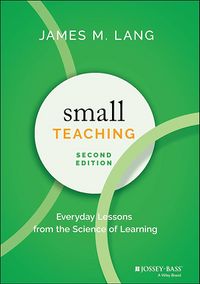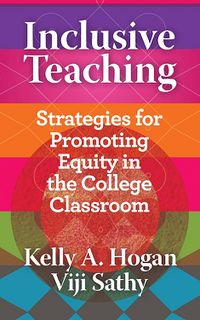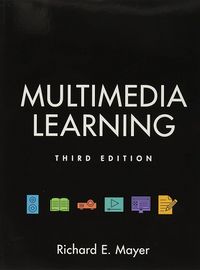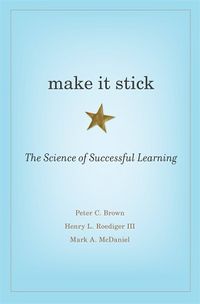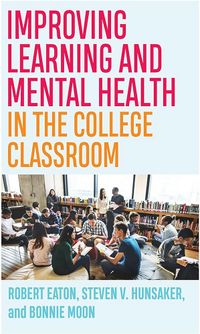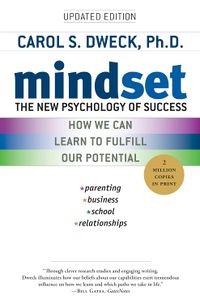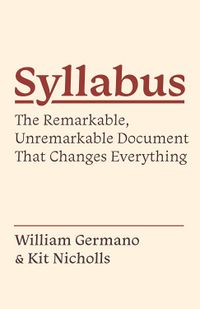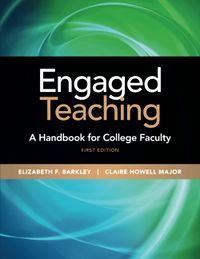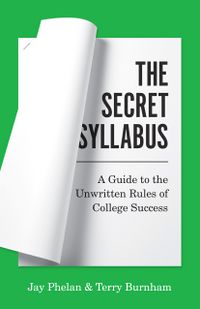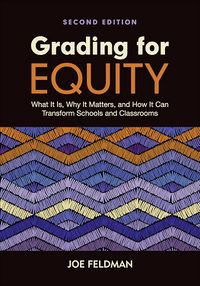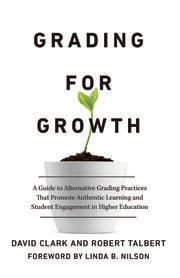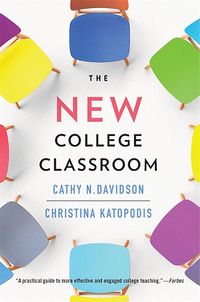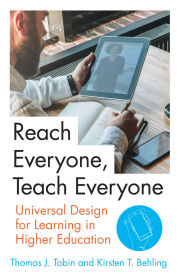TLT Bookshelf
The TLT Bookshelf is a series presented by WSU's TLT team to share summaries and recommendations from the top teaching and learning books.
To access one-page summaries of each book, visit TLT Bookshelf on OneDrive.
Small Teaching
Lang, James M. (2016). Small teaching: Everyday lessons from the Science of Learning. Jossey-Bass.
Knowledge: developing mastery of material through exposure and repetition
Retrieving: building cognitive pathways through exposure and repetition
- Ask “What did you learn last time?” at the start of class.
- Ask “What did you learn today?” at the end of class.
- Use low-stakes quizzes to gauge learning.
Predicting: making predictions to activate prior knowledge
- Use pre-tests to to gage learning.
- Ask student to predict how something will work.
Interleaving: spacing learning sessions over time and varying practice methods
- Use frequent and low-stakes quizzes on content.
- Make connections for students to previous and future content.
Understanding: applying course concepts and materials
Connecting: building comprehension by connecting new information to old information
- Present an organization framework for class structure.
- Ask students to complete a concept map.
- Use examples from real life.
Practicing: using class time for student practice and development of cognitive skills
- Break down larger assignments into small pieces.
- Allow students to self correct after feedback.
- Use class time to practice.
Explaining: explaining out loud how
- Explain your reasoning behind activities and assignments.
- Use peer-instruction, such as think-pair-share.
- Ask students to explain concepts to someone else.
Inspiration: influencing mindsets and attitudes that contribute to learning
Motivating: impacting students’ perceptions of the value, purpose, and benefit of an activity
- Show enthusiasm and share the positive real-work impacts of concepts.
- Pique student interest in concepts and activities.
Belonging: creating a sense of cognitive belonging, encouraging effort
- Identify (or ask students to) their assets.
- Name good work - share examples, provide positive feedback.
- Structure classes with more explicit instruction.
Learning: continuing your own professional development
- Read books, listen to podcasts, attend conferences, subscribe to a newsletter, attend events on campus
Availability
Available from WSU Library
Available through Winona Public Library (MNLink)
Inclusive Teaching
Hogan, Kelly A. & Sathy, Viji. (2022). Inclusive teaching: Strategies for Promoting Equity in the College Classroom. West Virginia University Press.
Inclusive teaching is a pedagogical decision. While preparing a class, assignment, lecture, or activity, teachers should consider (1) who might be left behind because of this decision and (2) how can these students be invited in. Inclusion is intentional, deliberate, and ongoing.
Diversity: the way students are similar and different
Equity: the goal of all learners having access to the same opportunities
Inclusion: culture where students feel welcomed, valued, and safe
Embrace Structure
The authors argue that structure is the key to bringing in students who have been traditionally underserved is to create more structure in class. Structure provides students with information about how to approach the course.
What do the authors mean by "structure"? Structure shows students how they should work, how they will be held accountable, and how they should approach the course. Structure means being transparent about why you are teaching in a certain way. The authors suggest adding required practice before, during, and after class.
Adding structure levels the playing field for students, and does not harm those students who already know what they are doing. Structure can be overlaid with active learning strategies.
- explain how students should use resources
- provide skeleton outlines
- require reading guides, quizzes, discussions, or reflections
- share lesson objectives
Availability
Available through Winona Public Library (MNLink)
Multimedia Learning
Mayer, Richard E. (2021). Multimedia learning (3rd ed). Cambridge University Press.
Mayer’s multimedia learning theory outlines how to structure multimedia elements to maximize student learning. Mayer’s 15 principles are grounded in cognitive science.
Dual-Channel Assumption: We have 2 separate channels for processing auditory and visual information.
Limited-Capacity Assumption: We have limited ability to absorb information at one time.
Active-Processing Assumption: We should be actively engaged in the learning process.
- Segmenting Principle: we learn better when complex information is broken down.
- Pre-Training Principle: we learn new things better when we already know the basics.
- Modality Principle: we learn better with images and narration than images and text.
- Multimedia Principle: we learn best with a combination of text and images.
- Embodiment Principle: we learn more from instructors who display high embodiment than low.
- Coherence Principle: we learn better when unnecessary information is excluded.
- Signaling Principle: we learn better when cues point us in the right direction.
- Redundancy Principle: we learn best with a combination of images and narration.
- Temporal Contiguity Principle: we learn better when text and images are presented at the same time.
- Immersion Principle: we do not necessarily learn better from 3D than 2D images.
- Personalization Principle: learning is best when it is personalized and focused on the learner.
- Voice Principle: we learn best with real presenters than artificial voices.
- Image Principle: we do not learn better when an image of the presenter is added to the screen.
- Spatial Principle: we learn better when text and images are close together.
- Generative Activity Principle: we learn better when we are guided through learning.
Make It Stick
Brown, Peter C., Roediger III, Henry L., & McDaniel, Mark A. Make it stick: The science of successful learning. Harvard University Press.
The strategies many students use to learn (read - re-read and highlighting) may not be as effective as they think. In fact, these strategies may give students an over-confidence about what they know.
Recommendations
- Mix up learning strategies. Practice retrieving (recalling) information in new ways. Varied practice improves how well you can apply your learning to new situations. For example, when reviewing your notes ask yourself: "What are the main points?" or "How do these ideas relate to what I just learned?"
- Space out your practice. Massed practice (ex: "cramming") does not work well for learning. After each class, take some time to review your notes and readings. Make this a regular activity for all of your courses.
- Test yourself. Multiple-choice questions are fine, short answers are better. Even flash cards. Test yourself, especially on the concepts you do not fully understand, not only on the new materials but also weave in previous material.
- Reflect on your learning. What worked and what did not? How might you do things differently in the future? Try new ideas for studying based on what you have learned about your own style.
- Mix up your practice. Read Chapter 2 and then go back and work on problems from Chapter 1. Then, try Chapter 3 problems before reading Chapter 3. Even mix up your subjects - a little math, then sociology, and then biology.
- Elaborate on your learning. Try breaking down the basic rules or principles. Try drawing the concepts and making connections. Try applying what you learned to your own life. Find an image or metaphor for a concept.
Availability
Available from WSU Library
Available through Winona Public Library
Improving Learning and Mental Health in the College Classroom
Eaton, Robert, Hunsaker, Steven V., & Moon, Bonnie. (2023). Improving learning and mental health in the college classroom. West Virginia University Press.
We are in a “mental health pandemic” and young adults are at particular risk (75% of lifelong mental health challenges start by the mid-20s). Mental health professionals play an important role, but the teacher’s role cannot be overlooked. Among individuals with mental health challenges, 25% are “dissatisfied” with the college experience and 30% “doubt the worth” of college. Two-thirds of those who withdrew from college did so for mental health reasons. Mental health impacts others: roommates, teammates, classmates.
Be Intentional
Stress reduces our ability focus, make important decisions, and form short- and long-term memories. Stress can lead to depression, reduced academic performance, less cognitive flexibility, and lower executive functioning. Students want faculty who care about and support them. How can we balance potential negative effects of teaching practices with our need to meet student learning outcomes? Try a psychological, pedagogical cost-benefit analysis:
- Carefully consider what we want to accomplish with an activity or assessment.
- Ask, what are the potential mental health impacts of this practice?
- Ask, how effective is this practice in helping students learn?
- Consider ways to temper the costs while preserving the benefits.
- Ask, are there alternatives? How do they compare psychologically and pedagogically?
Recommendations
- learn students’ names
- be proactive about reaching out to students
- make the most of “office hours” (require a first meeting, meet in common spaces, define them)
- make course design consistent and predictable (this reduces cognitive load)
- encourage and reward intellectual growth (provide opportunities for practice, give personal feedback)
Availability
Available through Winona Public Library (MNLink)
Mindset
Dweck, Carol. (2007). Mindset: The new psychology of success. Ballantine Books.
Fixed Mindset
General Belief:
Your abilities and qualities are set and unchangeable.
- Things that happen to you are direct measure of your worth.
- Some people are naturally good at things.
- Intelligence is static.
- You thrive with safety.
Challenges & Effort:
You avoid challenges.
- You shy away from things you do not know.
- Your effort is not useful.
Mistakes & Criticism:
You avoid mistakes.
- You get discouraged and give up.
- You ignore criticism.
- You give up easily.
Your Success & Others' Successes:
Success means being more successful than others.
- You feel threatened when others succeed.
Growth Mindset
General Belief:
Your abilities and qualities are changeable and require work.
- Your true potential is unknown.
- People are good at things because they work hard.
- Intelligence can improve.
Challenges & Effort:
You embrace challenges.
- You seek out new things.
- Your effort is necessary.
Mistakes & Criticism:
You embrace mistakes.
- You see mistakes as opportunities to learn.
- You learn from criticism
- You acknowledge weaknesses.
Your Success & Others' Successes:
Success means trying your best.
- You learn from others’ successes and are inspired.
Availability
Available from WSU Library
Available through Winona Public Library
Syllabus
Germano, William & Nicholls, Kit. (2020). Syllabus: The remarkable, unremarkable document that changes everything. Princeton University Press.
Every class has one. The syllabus. But, what is the syllabus? A reading list? A set of rules? A history of past issues? What could the syllabus be? A road map? A garden? An invitation? A diary? What do you want yours to be?
The syllabus could be a:
- a contract - outlining what is expected of student and teacher.
- a journey - an outline of how students will learn and develop.
- a diary - a tracking of what worked and what did not for the future.
- an invitation - a welcoming to students and a call to learning.
- a garden - a place to cultivate ideas and curiosity.
- a rulebook - noting what students can and cannot do.
- a calendar - a timekeeper for the semester.
- a tool - to convey goals, objectives, and expectations.
- a map - a guide for the semester, a reading list and schedule.
Availability
Available from WSU Library
Engaged Teaching
Barkley, Elizabeth F. & Major, Claire Howell. (2002). Engaged teaching: A handbook for college faculty. The K. Patricia Cross Academy.
Engaged teaching is a complex process centered on the intellectual effort invested in teaching.
Model of Engaged Teaching
Cognitive Element: includes both disciplinary and pedagogical knowledge
Affective Element: knowing why a technique enhances student learning
Conative Element: knowing how to take action to improve student learning
Foundations: Engaged teachers develop foundational knowledge of teaching and learning, including how students learn and what challenges exist to learning.
Planning: Engaged teachers produce a plan for instruction by setting significant learning goals and selecting coordinated assessments.
Climate: Engaged teachers establish a positive learning climate by striving to motivate students, to teach for equity and inclusion, and to create community.
Methods: Engaged teachers identify and select the best mix of instructional methods to meet their learning goals.
Improvement: Engaged teachers seek to improve their teaching. This might be through assessment and evaluation or engaging in the scholarship of teaching and learning.
Availability
Available from WSU Library
The Secret Syllabus
Phelan, Jay and Burnham, Terry. (2022). The secret syllabus: A guide to the unwritten rules of college success. Princeton Press.
College has a culture and norms of its own. And coming to college may be a culture shock for some students. This book provides some advice for students on mastering the unwritten cultural norms of college.
Don’t make a plan too early. When you are 18, you may not fully know all of the possibilities available to you. Use your first few semesters to explore, learn, investigate, and reflect. Use your General Education courses to see what interests you. Talk to your teachers about what interests them. Join a club. Travel. See what sparks your interest.
Set goals. You cannot make progress on your goals if you do not know what they are. Make your goals specific, clear, and doable. Set goals for today, this week, and the future. Where do you want to be in 5 years - how will you get there? What does You 2.0 look like? Prioritize your goals. Break them into manageable pieces. Include your social life, work life, academic life, family life in your goals.
Get to know your teachers. By building relationships with your teachers, you are opening opportunities for now and in the future. Use office hours to introduce yourself to your teachers; ask them questions about their work and how to be successful in their class. Say “yes” to opportunities to work with your teachers - teaching assistance or research. Keep in touch after graduation.
Study better. Learn how to take good notes (it probably is not writing everything) - listen carefully to what is said (as well as what is written), and make note of examples and emphases. Ask questions. Rewrite your notes. Study regularly, do not “cram”. Test yourself.
Go to office hours. Visit your teachers. But, wait! Go during scheduled office hours or make an appointment. Knock and wait to be invited in. Introduce yourself. Ask them questions - clarify, explore, prepare. Get to know them better. Office hours are a great way to get 1:1 attention and support.
Availability
Available from WSU Library
Grading for Equity
Feldman, J. (2023). Grading for equity: What it is, why is matters, and how it can transform schools and classrooms (2nd ed). Corwin.
Mistakes are part of learning, but often grading strategies send the message that mistakes are unwanted and punished. The current system does not allow for mistakes. Grading moves us further from the purpose of learning. Teachers loathe grading and are reluctant to discuss how and why they assign grades. Little training is provided and too little conversation happens.
Pillar 1: Accuracy
What do our grades actually represent? A student’s current knowledge? Their progress over the course? An average of their knowledge from the start of the semester and end?
- Instead of assigning a zero for missing assignments, score as “incomplete”.
- Consider the final grade calculation: is average the best measure? Averages are susceptible to outliers - early poor performance brings down the final grade.
- Consider a “no zero” policy - require that all work be completed to earn credit for the course.
Pillar 2: Bias-Resistant
How can we grade equitably to ensure grades accurately represent student learning? Bias may not be intentional. Grading effort and participation is subjective and only represents what can be seen.
- Grade anonymously. By removing student names, we take away hidden biases.
- Student behavior is not student learning - by grading timing (/lateness), we reinforce that grades are about something other than learning.
- Giving a zero for cheating lets students off the hook for mastering the content. Require students to complete the work.
Pillar 3: Motivation
The current grading system punishes mistakes and limits learning. Extrinsic motivation is not an effective strategy for authentic learning. Focusing on a growth mindset encourages students learning from their mistakes.
- Consider renaming grades: “exceed,” “met,” “not yet met,” or “insufficient evidence.”
- Allow students to retake quizzes and homework to show their learning.
- Grading should be transparent and understandable - students should know their progress at all times and how to improve.
Availability
Available from WSU Library
Grading for Growth
Clark, D. & Talbert, R. (2023). Grading for growth: A guide to alternative grading practices that promote authentic learning and student engagement in higher education. Routledge.
Traditional grading (total points earned, 90%=A) often lacks the feedback loop necessary for full learning. So, why do we do it? First, it provides a clear language across institutions (GPA, for example). Second, it is easy to calculate: 1 point=1 point. But, too often, this does not show growth over the semester - students are not able to act on feedback. Research shows less academic dishonesty because instructors value and support deep learning. Research also shows some increase in grades because students are not penalized for mistakes. Alternative grading is more equitable as final grades are based on learning.
4 Pillars of Alternative Grading
- Student work is evaluated using clearly defined and context-appropriate content standards for what constitutes acceptable evidence of learning.
- Student work doesn’t have to receive a mark, but if it does, the mark is a progress indicator toward meeting a standard and not an arbitrary number.
- Students are given helpful, actionable feedback that the students can and should use to improve their learning.
- Students can reassess work without penalty, using the feedback they receive, until the standards are met or exceeded.
Examples of Alternative Grading
Standards Based Grading (SBG): In SBG, instructors have a list of standards describing what students will be able to do. Assignments are connected to standards and each standard is evaluated multiple times. Instructors report on the progress a student is making and provides significant feedback. Students resubmit assignments until the standard is met. Final grades are based on how many standards are met.
Specifications Grading (Specs): In Specs grading, instructors develop a list of specifications that describe the qualities and characteristics of a successful assignment. Specs grading emphasizes mastery of content. Assignments may be bundled to correspond to final grades. Students are graded holistically - met or not met. Students revised assignments until specifications are met.
Availability
Available from the WSU Library
The New College Classroom
Davidson, C. N. & Katopodis, C. (2022). The new college classroom. Harvard.
Students start in one place and (hopefully) end somewhere better. This is the goal of education. Active learning is more effective and more egalitarian than lecture or controlled discussion. Learners have higher test scores, better retention, and increased applicability.
9 Principles to Incite Learning
- Active learning is empowering. In active learning, the learner is the agent of their own learning.
- Active learning is effective, accessible, and equitable. Active learning is especially effective for first-generation, low-income, and marginalized learners.
- Learning requires independent exploration. Learners learn best with activity and opportunities to explore new information or skills.
- Engage all learners. Activities like think-pair-share allows all learners to contribute and for more perspectives to be shared.
- Active learning is rigorous. Active learning gives learners the tools to explore beyond the classroom.
- Metacognition is thinking about thinking. Ask learners to reflect on what they learned, how they learned it, and how they might use it in the future.
- What we teach in college is for the world beyond college. We are teaching learners how to be productive citizens and employees.
- Everything is a teachable moment. Mistakes are sometimes our best learning opportunities.
- Co-learn. When we are open to learning from our students, we model better practices for our students.
Availability
Available from the WSU Library
Reach Everyone, Teaching Everyone
Tobin, T. J. & Behling, K. T. (2018). Reach everyone, teach everyone: Universal design for learning in higher education. West Virginia University Press.
The principles of Universal Design for Learning (UDL) are based on science on how humans learn. The goal of UDL is learner agency that is purposeful & reflective, resourceful & authentic, strategic & action-oriented. The UDL Guidelines are broken into three principles to include multiple means of engagement, representation, and action and expression.
The UDL Guidelines offer practical ways to improve your teaching. But you do not have to change everything all at once. Think about adjusting just one thing to your teaching. What can you do in the next 20 minutes? The next 20 days? The next 20 months? Small changes make a big impact on learning.
Availability
Available from the WSU Library
Have a book recommendation? Send it to TLT @ tlt@winona.edu.
Except where otherwise noted, text is available under the Creative Commons Attribution-NonCommercial-ShareAlike 4.0 International License.

